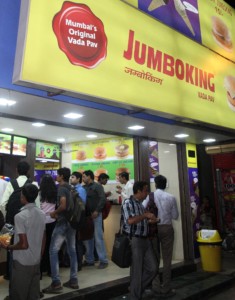The F&B foodservice market is worth Rs 204,438 crore, is growing at a compound annual rate of 23-24 per cent and is expected to touch Rs 380,000 crore by 2017. What’s more, Quick Service Restaurants (QSR) and casual dining are the two most popular formats that form 45 per cent and 32 per cent of the overall market respectively.
According to an ASSOCHAM Report released in 2015, the QSR sector in India was expected to grow three-fold over the next five years. The sector seems to be booming with foreign QSR brands expanding the number of outlets. Currently, it has been observed that the Indian QSR entrepreneurs have begun to scale their brand chains equally.
Culinary and Process Advisor, Pat N Harry, Sonia Mohindra says, “India has been paying huge franchise fees to get international brands, and each time, each of these brands has to go through an India cutomization or an India orientation – whether it is creation of a vegetarian platform, or adapting to our sensitivities to our meats. When all this culinary development is happening for the Indian market, then why not create your own brand keeping in mind the values that the customer wants.”
 She further adds, “There is also a better understanding of scalability, and understanding that there is a greater financial reward in volumterics vis-a-vis the glamour of running a high-end full fledged restaurant.”
She further adds, “There is also a better understanding of scalability, and understanding that there is a greater financial reward in volumterics vis-a-vis the glamour of running a high-end full fledged restaurant.”
Co-founder, Burger Singh, Kabir Jeet Singh says, “There have been a rise in number of Indian QSR due to many factors like Environment – the access to capital to innovative and enterprising companies has become easier than it was a few years ago; Demand – changing demographics, increase in income, urbanisation, growth in organised retail and demand for hygienic food and lastly Supply – the Government has improved infrastructure and private investment in cold chain networks across the country has made access to quality raw material a reality.
However, a foreign brand has an easy first quarter of operations because of the hype around them being ‘international’ – so high volumes, along with high marketing spend make it a virtuous circle rather than the local QSR who has to deploy various marketing strategies to pull in the volumes in the same quarter.
But still, Indian QSRs have an edge in their home market. There is a strong preference for Indian flavours and cooking styles. The interest in international dishes is on the rise but most Indian consumers continue to prefer Indian-style dishes.
 MD Jumboking, Dheeraj Gupta says, “Indian QSRs have the advantage that they can create new categories which do not exist in the West. Besides the variety of options present in India – both in terms of cuisine and demography – can spur innovation in every way. In fact, we were surprised to see that a product we innovated in 2006, a Schezwan-Sauce flavoured Vada Pav, is now on the McDonalds menu in 2016.”
MD Jumboking, Dheeraj Gupta says, “Indian QSRs have the advantage that they can create new categories which do not exist in the West. Besides the variety of options present in India – both in terms of cuisine and demography – can spur innovation in every way. In fact, we were surprised to see that a product we innovated in 2006, a Schezwan-Sauce flavoured Vada Pav, is now on the McDonalds menu in 2016.”
Co-founder, Chaayos, Raghav Verma says, “Indians are increasingly moving to tastes and flavours that are comfortable with. Just like we have experimented with chai – a product that people understand. What we have done is put it in a contemporary setting that appeals to today’s customers. Indian QSRs are bound to grow as they are serving products that the customer loves and has grown up on.”
Owner, Imly, Vivek Bhargava says, “Indian QSRs are growing and will continue to grow in future as they understand the taste of the Indian palate and promise to deliver the food that they grown up eating in a hygienic way.”
A QSR’s success is dependent on its location demographics to create mass appeal. The standardised experience across all outlet chains is about ambiance, hygiene, time to service & taste that generates instant interest in the mind of the consumer.
The QSR format took off in India about 20 years ago with the arrival of McDonald’s in 1996. Many global brands followed suit since then, either through company-owned stores or the franchisee model or a mix of both.
The interest in international dishes is on the rise but most Indian consumers continue to prefer Indian-style dishes
Must Read



